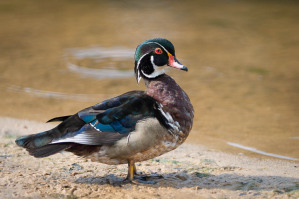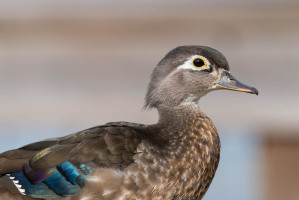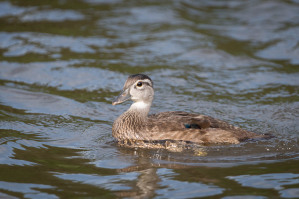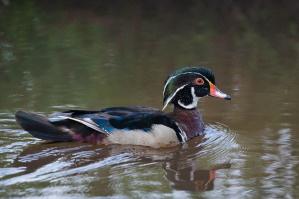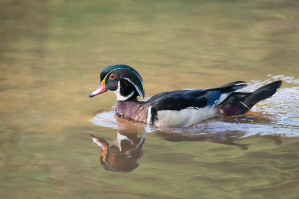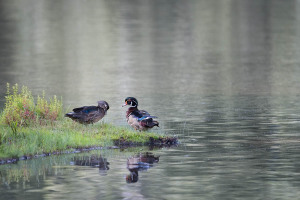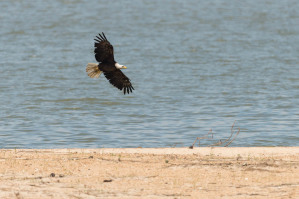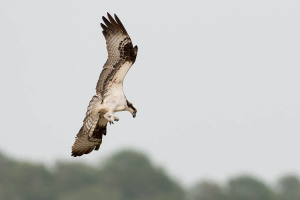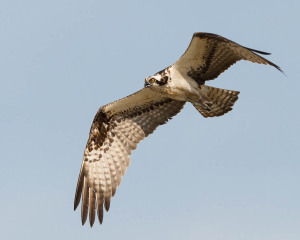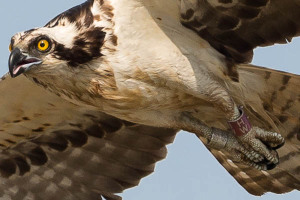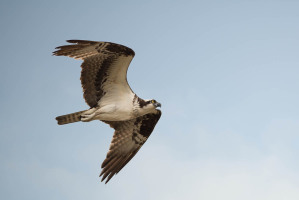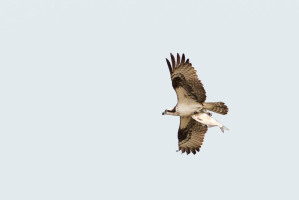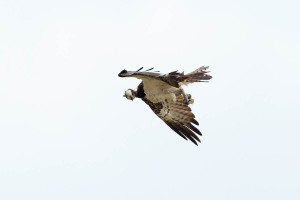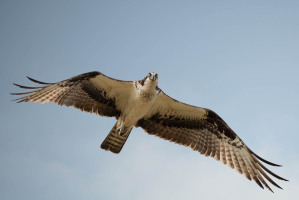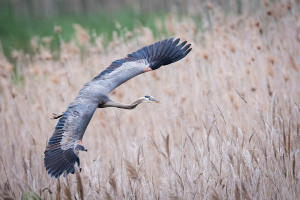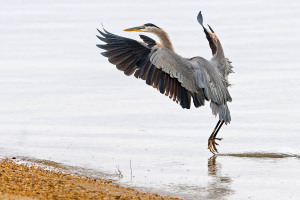The Wood Duck is arguably the most spectacular of all waterfowl. Some may say the closely related Asian Mandarin Duck is more beautiful or even the Harlequin Duck but, it’s hard to discount the amazing Wood Duck.
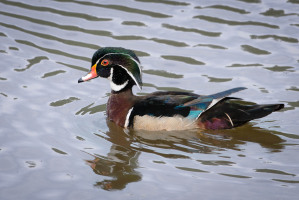
The male in breeding plumage is indeed something to behold. The feathers are iridescent and produce a brilliant display of green, blue, teal, chestnut, tan and black. Their eyes are bright red.
What hen could possibly turn down a guy that looks like this? That’s one dashing duck!
They’re relatively small in size and one of the only ducks able to perch high in trees due to their strong claws.
The females are no slouch either. Most females in the duck world are mostly drab brown and tan but, not the female Wood Duck. No, they’re not as flashy as their male counterparts but, they possess an elegant subtlety.
Females may pick a new mate each year but, they usually return to the same nest for several years. They are one of the few waterfowl that have two broods each season. Typically, they lay one egg per day for 12-14 days. After 28 to 32 days the eggs begin to hatch. All eggs will hatch in less than 24 hours. The first morning after the hatch, the female leaves the nest and calls her young to follow. And follow they do.
This immature little guy appears relatively sedate compared to mom and dad. He’s got a lot to learn in a short period of time.
Loss of habitat and over-hunting for feathers for lady’s hats nearly wiped out the Wood Ducks. They were given some federal protection in 1918 and people learned to construct nesting boxes. Populations started to rebound by the 1920’s. Today, they’re doing just fine.
Soft afternoon light near the “golden hour” delivers all the rich colors of the bird and his environment.
The couple share a quiet moment together.

